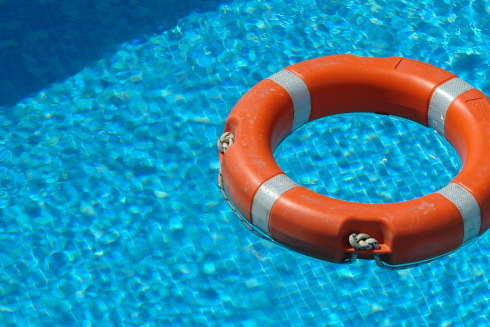RESPECTED travel magazine Lonely Planet has named these activities the top ten things to do in Spain’s Andalucia.
Spain’s biggest region, it may be hard to know what to do in Andalucia.
There are so many things to explore from natural wonders to world-class cathedrals, so which should you prioritise?
Prestigious travel experts Lonely Planet have now revealed their fool proof guide to the region, highlighting the top 23 attractions in the region.
We’ve selected their top two recommendations from each area to give you a compact run down of the must see locations in Andalucia.
Sevilla and Huelva
Topping the list is the ‘awe inspiring’ Gothic cathedral in Sevilla.
The world’s largest Gothic building, the Catedral de Santa Maria de la Sede is a ‘veritable feast of artworks and skilled craftwork’.

“Flying buttresses, cheeky gargoyles and lavish Gothic ornamentation decorate the exterior of this remarkable feat of creation, which bears testament to the inspirational power of religious fervor,” said the travel magazine.
Secondly, they recommended visiting Sevilla’s Giralda tower, where you can ‘look out over rooftops, see important royal tombs and major art treasures.’
“La Giralda also contains major art treasures, including a Goya in the Sacristia de los Calices, a Zurbaran in the Sacristia Mayor, and Murillo’s shining La Inmaculada in the Sala Capitular. Still hugging the exterior wall, the four sturdy figures carrying an ornately carved catafalque mark the Tomb of Columbus,” said Lonely Planet.
Granada and Almeria
On the top of anyone’s list in Granada, it’s no surprise the Alhambra takes the first spot in the magazine’s list.
Described as one of the ‘most architecturally perfect buildings in existence’, the Alhambra is Spain’s second most-visited attraction, and with good reason.

“The Moorish palace-fortress of Alhambra sits high above Granada, encircled by defensive walls. Alcazaba occupies Alhambra’s western tip with unparalleled views of Albayzin, the Sacromonte hills, and Granada’s rooftops,” said Lonely Planet.
“The Museo de la Alhambra features superb tilework, the elaborately carved wooden door from the Sala de Dos Hermanas, and the excavated remains of the Acequia Real (Royal Water Channel).”
Second on their list was the La Geoda de Pulpi crystal cave in the Sierra de Aguilon.
Near the border with Murcia, the abandoned silver mine is home to the world’s second-largest geode.
Measuring eight metres long and two metres tall, the impressive natural phenomenon can be visited with a guide.
“The tours will take you through tunnels glistening with mineral deposits and show off a cathedral-like cavern with a massive spiral staircase. The tour de force is the descent 50m (164 ft) below the surface, where you get to climb inside the actual geode – a giant crystal resembling a sparkling cave,” stated the magazine.
Cadiz and Gibraltar
Western Andalucia is finally getting the recognition it deserves, with many tourists exploring the virgin Costa de la Luz and venturing into the curious area that is the ‘Rock’.
One of British grannie’s best loved drinks, sherry famously hails from Andalucia and Lonely Planet has chosen a tour of a Cadiz bodega as their top choice in the area.
Bodega Manuel Aragon offers a 90-minute visit including a stroll around the vineyards, a tasting and a detailed explanation of the sherry making process.

They also recommended a trip to Peña Flamenca La Perla, ‘one of the original homes of flamenco’.
Set in the ‘romantic’ Barrio de Santa Maria, the magazine recommends visiting on a Friday night when the ‘cavernous venues fills up with aficionados.’
Stay till 10pm, when the ‘spellbinding’ Miri ‘Perlita’ Galeano takes to the stage accompanied by intense guitar and skilled footwork.
Cordoba and Jaen
Amongst the miles and miles olive groves, Cordoba and Jaen are home to some cultural gems well worth a visit.
First on Lonely Planet’s list is ‘Moorish marvel’ that is the Mezquita de Cordoba.

“Jewel of the Moorish caliphate when it was the Grand Mosque of Cordoba, and later one of Spain’s great cathedrals, the Mezquita is justifiably considered to rank among the world’s most magnificent buildings. With many sites to see, take your time and savor the detail,” the magazine recommended.
Also in Cordoba, Lonely Planet advised visiting the Alcazar de los Reyes Cristianos.
Much like the Mezquita, the Alcazar has traces of both Moorish and Christian rule, alongside Roman mosaics and immaculate gardens.
A ‘small but fascinating attraction’, the Alcazar has been used as a palace, a military base and a prison, providing a rich history.
Malaga
While many flock to Malaga for its beach resorts, the region has a surprising variety of natural, cultural and culinary delights to offer.
First on that list is El Torcal de Antequera, a natural park some 10 miles from the equally beautiful town.

Alongside the dolmens and La Pena de los Enamorados, it makes up Antequera’s UNESCO World Heritage Site.
“The park itself feels almost Martian-like, with bizarre towering rock formations rising towards the sky like stacks of pancakes, each with individual layers. Mountain goats scale the pinnacles and graceful vultures soar overhead. The landscape was created by rampant earthquakes in our planet’s crust, which forced the rock upwards, creating mountains over 1300m (4265 ft) high,” the magazine wrote.
Lonely Planet’s second recommendation couldn’t be further from El Torcal, with the Museo Picasso.
The museum provides a ‘complete overview’ of Picasso’s creative work, with over 200 works spanning eight decades of the artist’s life.
Housed in the Buenavista Palace, the museum opened in 2003 and since been a bastion of Picasso’s legacy in the city, ‘transforming Malaga into the art and cultural heart of Andalucia.’








